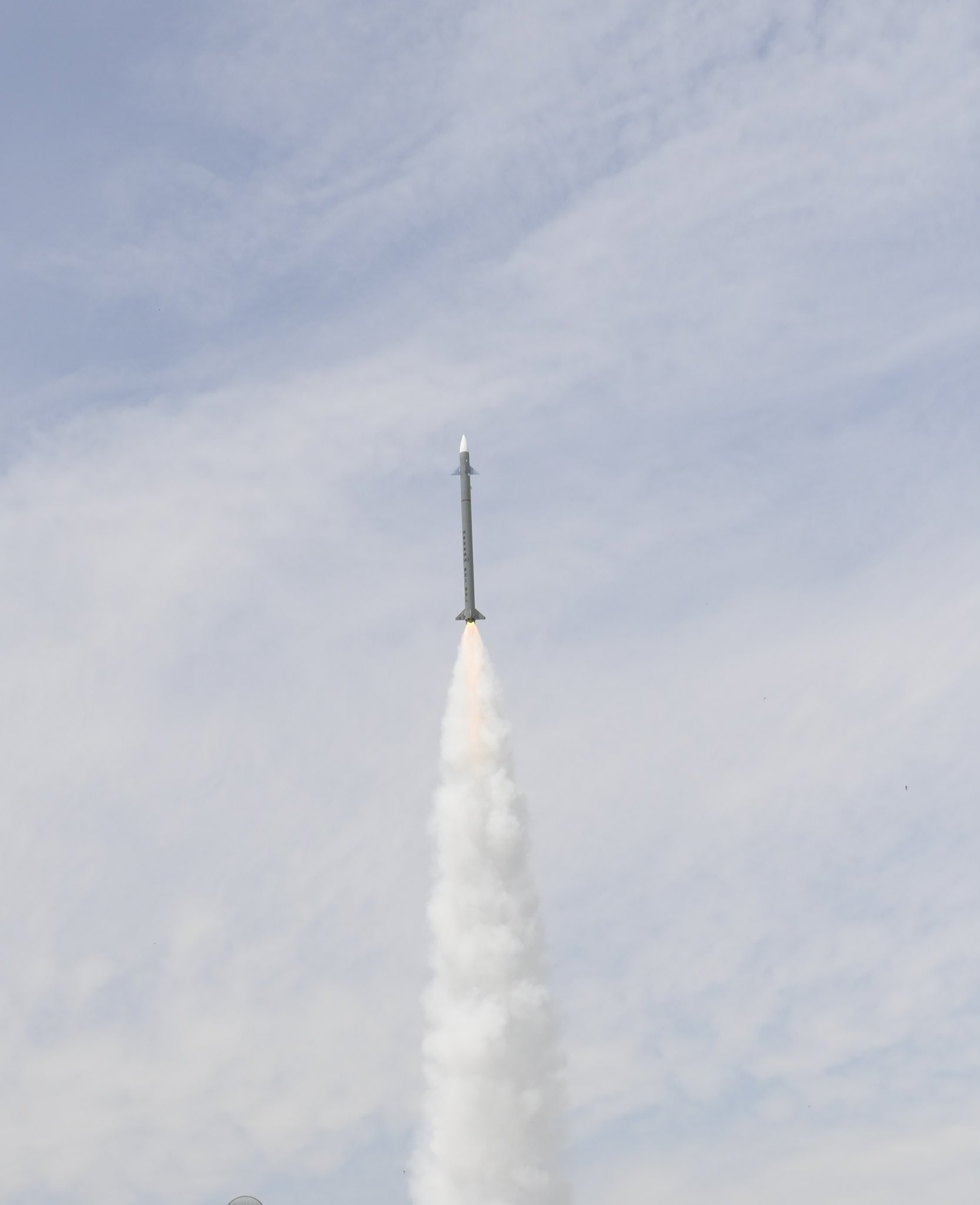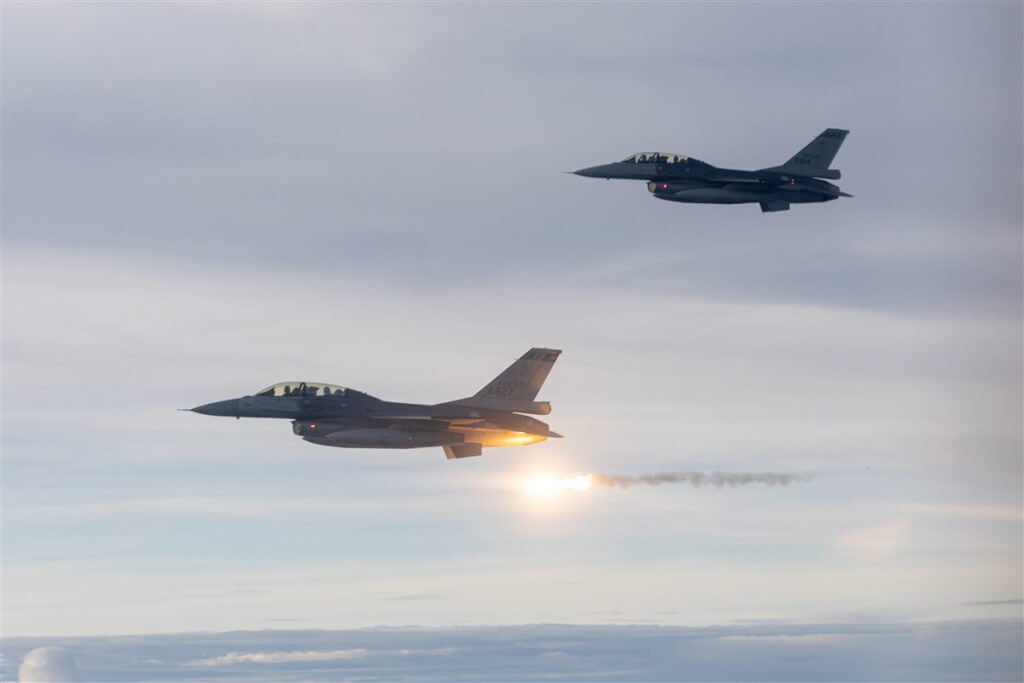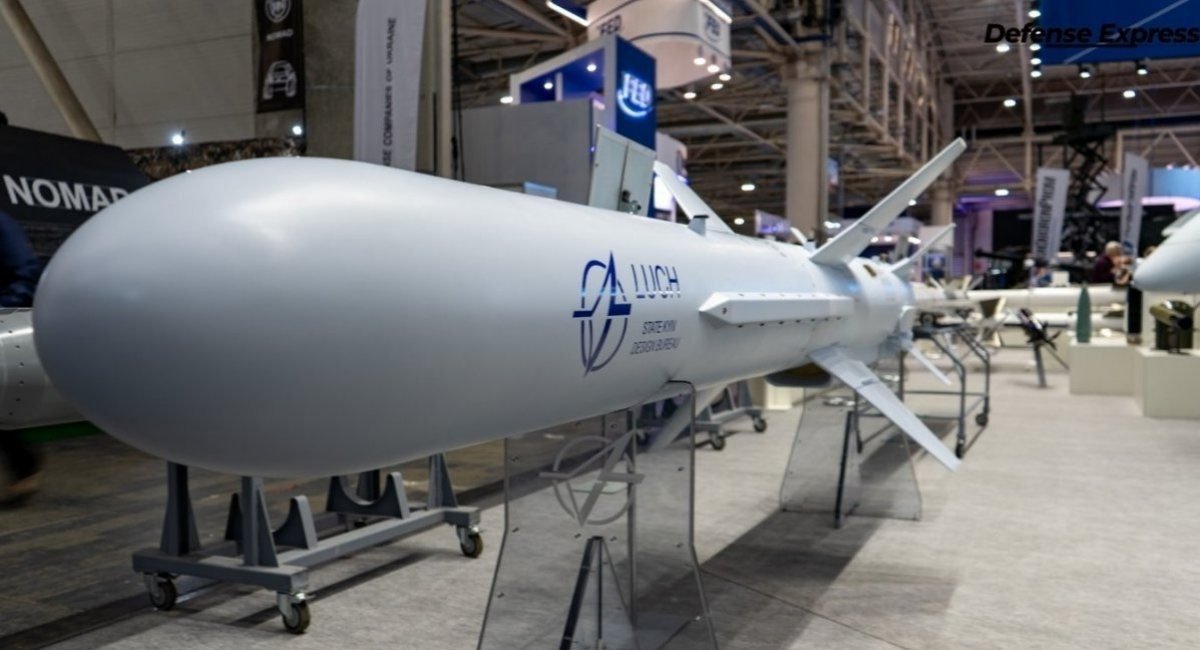The Indian Army (IA) is set to bolster its air defense capabilities by inducting three advanced, fully indigenous systems that cover the full spectrum of aerial threats.
These include the Indo-Israeli MRSAM (Medium Range Surface-to-Air Missile), the indigenously developed QRSAM (Quick Reaction Surface-to-Air Missile), and the VSHORADS (Very Short Range Air Defence System).
Together, these systems reflect technical excellence and mark a significant milestone in the maturity of DRDO’s air defense missile development.
MRSAM
The Indian Army’s Eastern and Southern Commands, under DRDO guidance, successfully conducted four operational flight tests of the MR-SAM system on April 3 and 4 from Dr APJ Abdul Kalam Island off the Odisha coast.
“The missiles intercepted and destroyed high-speed aerial targets with direct hits. The trials validated the system’s performance against targets at long range, short range, high altitude, and low altitude,” a defense ministry official said.
“These tests have demonstrated the operational readiness of both Army commands and paved the way for inducting the MR-SAM system into two regiments,” the official added.
Previously, on March 30, 2022, the MR-SAM Army variant completed its development trials following a series of successful tests at the Integrated Test Range, Chandipur, Odisha.
MRSAM Induction
According to The Times of India, the Army operationalized its first ‘Abhra’ MR-SAM regiment in February 2023 under the 33 Corps, tasked with defending the frontier with China in Sikkim and the strategically vital Siliguri Corridor.
Each MR-SAM system consists of a command-and-control unit, tracking radar, mobile launchers, and surface-to-air missiles. Eventually, five MR-SAM regiments are planned for deployment along the borders with China and Pakistan, with each regiment equipped with eight launchers carrying eight missiles each.
The MR-SAM systems are set to replace the aging Russian-made Kvadrat and OSA-AKM systems, which were inducted between the 1970s and 1980s.

MRSAM – Ballistic Missile Integration
It’s likely that the Army variant of the MRSAM will eventually be integrated with the ballistic missile defense system being developed by the DRDO.
The colocation of S-400 IADS and MRSAM squadrons at the IAF base in Adampur may aim to integrate the IAF MRSAM variant with the S-400 system.
(On an aside, the IAF MRSAM system differs from the IA MRSAM. IAF MRSAM systems are semi-static – the radars and launchers are mounted on trailers and optimally deployed for maximum efficiency. The IA MRSAM systems are mobile – the radars and launchers are mounted directly on Tata LPTA 3138 8×8 HMVs).
System Capabilities
The MRSAM system employs a vertically launched missile with an active radar seeker and a dual-pulse, smokeless solid-fuel motor, enhancing stealth and endgame maneuverability.
The Indian Air Force (IAF) and Indian Navy (IN) MRSAM variants both have a 70 km range, while the Indian Army (IA) variant is reported to have a shorter 50 km range. This reduced range, if accurate, likely stems from mobility constraints, as the Army variant integrates its radar and launchers onto mobile platforms. All three variants—IN, IAF, and IA—use the same missile and radar systems (LBMFSTAR, EL/M-2084). However, the Army’s radar, mounted on a Tata LPTA 3138 8×8 high-mobility vehicle (HMV), may face range limitations due to restricted electrical power and terrain challenges.
The Army MRSAM, designed to replace systems like Kvadrat and OSA-AKM, operates from mobile-tracked vehicles to protect mechanized formations on the move. It was showcased during the Republic Day Parade in 2024, highlighting its launcher and radar on the Tata 8×8 HMV platform.

QRSAM
The Quick Reaction Surface-to-Air Missile (QRSAM) is an area defense system designed for search-on-move, track-on-move, and fire-on-short-halt operations, engaging multiple targets up to 30 km. It operates with a two-vehicle configuration: a fully automated Command and Control System, an Active Array Battery Surveillance Radar (BSR), an Active Array Battery Multifunction Radar (BMFR), and a Launcher. Both radars are four-walled, AESA (Active Electronically Scanned Array) systems with 360-degree coverage, using GaN technology and Quad Transmit and Receive Modules (QTRMs) for electronic warfare resistance. Mounted on 8×8 High Mobility Vehicles (HMVs), they feature advanced platform motion compensation, electronic stabilization algorithms, and high-accuracy motion sensors, enabling operations in plains, deserts, and semi-deserts while on the move.
The single-stage missile employs an Inertial Navigation System (INS) with a two-way data link for midcourse guidance and an active Radio Frequency (RF) seeker for terminal guidance.
Reports suggest the QRSAM could integrate an indigenous optical system for passive target acquisition. The DRDO’s Instruments Research and Development Establishment (IRDE) has developed the Stabilised Electro-Optical Sight (SEOS), a two-axis stabilized panoramic sight mountable on mobile platforms like tanks, boats, or aircraft.
The SEOS, capable of passively acquiring targets up to 40 km, includes a laser range finder, CCD camera, thermal imager, and automatic video tracker. Hyderabad-based VEM Technologies has been tasked with manufacturing these systems for the Ministry of Defence. The SEOS could also support the Akash-NG missile system. While foreign equivalents cost around Rs. 12 crore, the indigenous SEOS is estimated at Rs. 2 crore, offering significant cost savings.
QRSAM Development Status
The QRSAM system was last tested in September 2022 as part of evaluation trials by the Indian Army.
During the trials, six missiles were launched from Integrated Test Range (ITR) Chandipur off the Odisha coast against high-speed aerial targets mimicking various types of threats to evaluate the capability of the weapon systems under different scenarios, including long-range medium altitude, short-range, high altitude maneuvering target, low radar signature with receding & crossing target and salvo launch with two missiles fired in quick succession.
These tests were conducted in the final deployment configuration, which consists of all indigenously developed subsystems, including the missile with indigenous Radio Frequency (RF) seeker, mobile launcher, fully automated command and control system, surveillance, and multi-function Radars.
However, the fact that no orders have been placed for the system, nor have there been any follow-up tests, suggests that DRDO is likely addressing some technical shortcomings with the system brought to light by the IA.
If such a technical issue exists, it’s unlikely to be a showstopper since several media reports indicate that the IA is poised to place its first order for the QRSAM system.
VSHORADS
The DRDO-developed Very Short Range Air Defence System (VSHORADS) is optimized to counter low-altitude aerial threats. It is man-portable and tripod-launched, not shoulder-fired, though its technologies and subsystems could support the development of an indigenous shoulder-fired air defense missile.
Designed and developed by DRDO’s Research Centre Imarat (RCI) in Hyderabad, in collaboration with other DRDO labs and two Development-cum-Production Partners (DcPPs), the VSHORADS has involved the Indian Army, Navy, and Air Force from the outset, with all three services participating in its developmental trials.
System Capabilities
The VSHORADS missile, developed by DRDO, features an Imaging Infrared (IIR) seeker and a hit-to-kill warhead. It incorporates advanced technologies, including a miniaturized Reaction Control System (RCS) and a dual-thrust solid motor, enhancing endgame maneuverability. The missile measures 2 meters in length, 0.09 meters in diameter, and weighs 21 kg.
It can engage targets at ranges of 6–7 km and achieve a top speed of Mach 1.5. While its speed and range are less than those of the Russian Igla-S or the US Stinger missiles, VSHORADS shares the Stinger’s dual-pulse motor and hit-to-kill warhead, potentially making it more lethal than the Igla-S currently used by the Indian Army.
Overall, VSHORADS is a capable system with room for progressive enhancements by DRDO. Its design is highly optimized for portability, ensuring ease of use in the field.
VSHORADS Development Status
The development of VSHORADS missiles has been completed, and two production agencies have been engaged in the Development cum Production Partner (DcPP) mode.
The missile was last tested on February 2, 2025, when it successfully engaged high-speed targets flying at very low altitudes in three consecutive trials.
The flight tests were carried out in the final deployment configuration, where two field operators carried out weapon readiness, target acquisition, and missile firing.

Akash NG
Besides the three missiles discussed above, the IA is also actively inducting the indigenously developed Akash AD systems.
The latest Akash missile variant—Alash NG—is undergoing development trials. Like the QRSAM, it is an area defense missile with a 30 km range. However, because of its dual pulse capability, it is likely to be more lethal.
Conclusion
The Indian Army is poised to field a comprehensive, multi-tiered air defense shield built entirely around indigenously developed and manufactured missile systems.
This layered architecture will enhance protection against a wide range of aerial threats—from high-speed fighters and UAVs to cruise missiles—reflecting a significant leap in self-reliant defense capability. It also marks a major milestone in India’s efforts to reduce dependence on foreign-origin air defense platforms.
- Vijainder K Thakur is a retired IAF Jaguar pilot, author, software architect, entrepreneur, and military analyst.
- VIEWS PERSONAL OF THE AUTHOR
- Follow the author @vkthakur







